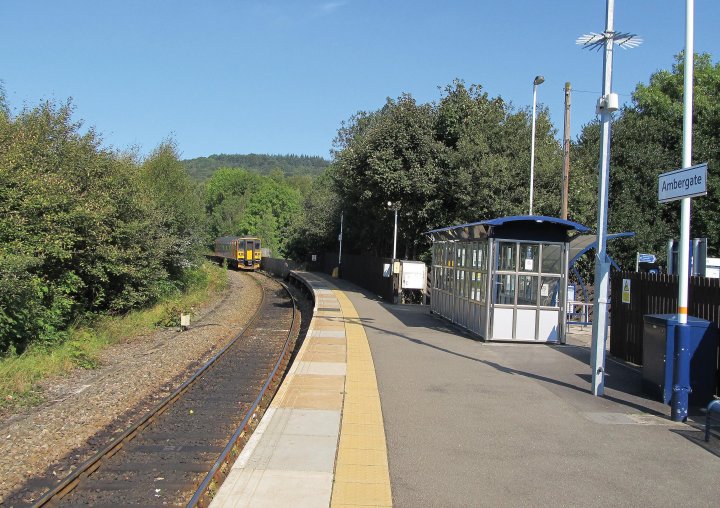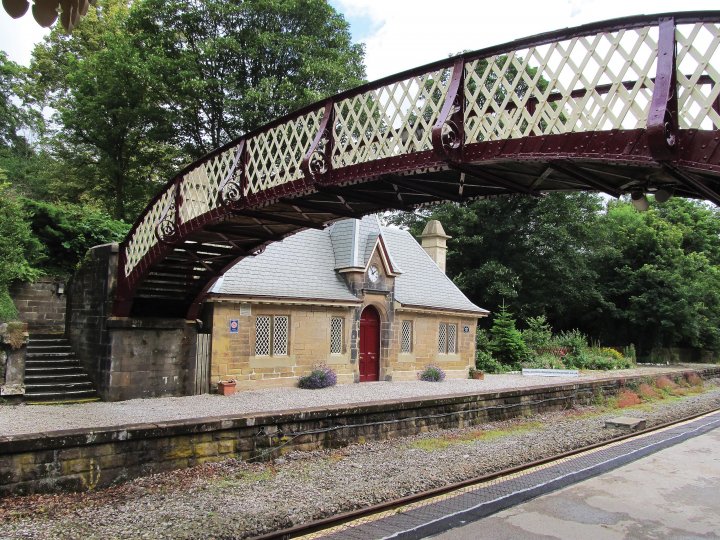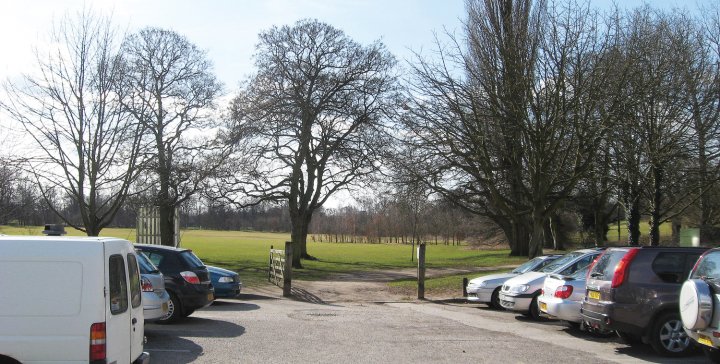Aim 05
Develop an integrated and sustainable approach to meeting and promoting the transportation and accessibility needs of the DVMWHS and its users.
Context
The Derwent Valley Mills World Heritage Site has good public transport links. It has a rail service that runs from Derby in the south to Matlock in the north, stopping at Duffield, Belper, Ambergate, Whatstandwell, Cromford and Matlock Bath. It also has frequent bus services that run along the A6, the main distributor road running through the DVMWHS. Due to the geography and historic development of the valley, there is potential to cause unwanted congestion on the road network as visitors arrive by car. It is therefore important to encourage use of public transport both to move around the Site and also, ideally, when travelling to the Site.
It is important to promote up-to-the-minute public transport information at all the key destination sites, to assist movement through the Site, as well as from strategic car parking locations around and through the Site.
Due to the historic nature of the Site, work is required to improve access for all. Where this cannot be achieved without negatively impacting on the Site’s historic significance or Outstanding Universal Value, other means of access need to be explored. It is important to promote awareness of the facilities that are available through the World Heritage Site so that individuals and groups with special requirements can easily plan their visits.
Objectives and Actions for 2020-25
Obj 5.1
Promote, in conjunction with the Community Rail Partnership, the development and use of the Derwent Valley Line.
ACT 5.1.1
Encourage all WHS partners to promote greater use of the Derwent Valley Line to local people and visitors by including information in their publicity material and on site.
ACT 5.1.2
Support events that encourage greater public use of the railway stations in the DVMWHS, especially where they help evoke a connection to their historic past and the OUV of the DVMWHS.
ACT 5.1.3
As the railway is a key element of a DVMWHS attribute, develop material that helps to promote people’s engagement with the railway line as part of the wider World Heritage Site, e.g. the train window guide.
ACT 5.1.4
Encourage all World Heritage Site partners to promote the discounts available for groups to travel along the Derwent Valley Line, particularly for school groups.

Ambergate Station
Obj 5.2
Promote greater connectivity between the Derwent Valley Line’s railway stations and the wider World Heritage Site.
ACT 5.2.1
Make available information that assists visitors in moving between Derby Railway Station and the southern gateway at Derby Silk Mill.
ACT 5.2.2
Develop and implement a way-finding strategy from Belper Railway Station and other public transport arrival points to sites relating to the DVMWHS in the town, including the Belper Mills complex.
ACT 5.2.3
Make available information that assists visitors in moving between Ambergate, Whatstandwell and Cromford Railway Stations and the surrounding environment, in particular the Cromford Canal.
ACT 5.2.4
Make available information that assists visitors in moving between Matlock Bath Railway Station and Masson Mills at the northern end of the DVMWHS.

Cromford Station
Obj 5.3
Investigate greater connectivity between Cromford’s railway station, mills and village.
ACT 5.3.1
Explore the viability of extending a route from the platform at Cromford Railway Station over the railway bridge to provide a foot and cycle link through Cromford Meadows to the mills and the village.
ACT 5.3.2
Encourage clearer information on bus service availability from Cromford Railway Station to the mills and village, including the bookable Derbyshire Connect bus service.
ACT 5.3.3
Explore ways of providing better connections between Willersley Castle, Cromford Mills and Masson Mills, including looking at improving existing routes, e.g. Church Walk, and the feasibility of a footbridge across the River Derwent.
ACT 5.3.4
Support the development of a wayfinding strategy for the whole of the Cromford Hub.
Obj 5.4
Work with bus operators and others to encourage greater use of bus services across the WHS site and the Derwent Valley more generally.
ACT 5.4.1
Encourage bus operators to including marketing of the WHS in their publicity.
ACT 5.4.2
Encourage all World Heritage Site partners to promote travel by bus as a way to reach their attraction and to come forward with discounts specifically targeted at people arriving by bus.
ACT 5.4.3
Work with bus operators and Derbyshire County Council to expand the coverage of the electronic Real Time Information bus stop sign network to include more locations and bus services along the Derwent Valley.
ACT 5.4.4
Promote the public transport times, particularly bus services, from each of the key locations in the WHS to other sites (including Transpeak and Sixes).
Obj 5.5
Support the coordination of public transport information to provide the best possible options, experience and ease for residents and visitors to move through the Derwent Valley Mills World Heritage Site.
ACT 5.5.1
Support the provision of up-to-the-minute multi-modal transport information for visitors and residents to assist sustainable movement through the DVMWHS.
Obj 5.6
Encourage the development of alternative transport options for exploring the DVMWHS.
ACT 5.6.1
Promote the existing cycle routes in the DVMWHS and encourage the development of new routes that do not impact on its Outstanding Universal Value or adversely impact on other existing user routes.
ACT 5.6.2
Work with partners to explore the viability of an e-bike scheme – with charging points – across the WHS, particularly between key attractions and transport hubs.
ACT 5.6.3
Support the initiative to introduce a river boat at Derby, running between the Silk Mill and Darley Abbey, which does not impact on the listed weirs and can be used by visitors or locals during the high season, with embarkation points at Derby Silk Mill and Darley Abbey.
ACT 5.6.4
Promote the use of the Ecclesbourne Valley Railway.
Obj 5.7
Ensure off-road routes through the DVMWHS are suitably maintained by owners to encourage exploration of the DVMWHS on foot.
ACT 5.7.1
Work with partners to ensure public rights of way and footpaths (including the Derwent Valley Heritage Way) are well maintained and signposted.
ACT 5.7.2
Encourage local users to help in identifying where footpaths have maintenance issues.
ACT 5.7.3
Encourage access, through promotion, to the DVMWHS’s beautiful countryside setting.
Obj 5.8
Support the improvement of access for all, so everyone can enjoy the DVMWHS. This includes getting to and around the DVMWHS and its attractions.
ACT 5.8.1
Work with Accessible Derbyshire to audit all the key attractions and produce proposals to improve their accessibility for all, and identify where additional facilities would particularly improve access for all, e.g. Changing Places toilets and quiet rooms.
ACT 5.8.2
Work with Accessible Derbyshire to audit all the stations along the DV Line and produce proposals to improve their accessibility including approaches and platforms.
ACT 5.8.3
Assist partners in securing funding to deliver the proposals highlighted as a result of Actions 5.8.1 and 5.8.2.
ACT 5.8.4
Encourage the dissemination of information about the facilities and support available across the DVMWHS, so that people with access and/or other specific needs can plan their visits.
ACT 5.8.5
Promote the locations where all-terrain scooters are available for hire in the DVMWHS. Assist partners in identifying new locations that will encourage visitors to explore and spend more time in the World Heritage Site.

Car Park by Darley Park, Darley Abbey
Obj 5.9
Identify strategic car and coach parking locations in and around the World Heritage Site and encourage movement from these locations either by foot, cycle or public transport.
ACT 5.9.1
Work with the key destination sites to understand their coach-parking requirements.
ACT 5.9.2
Work with Derbyshire County Council’s and Derby City Council’s public transport officers and highway planning officers to identify the best strategic locations for car and coach parking in and around the World Heritage Site and promote these destinations to people arriving by car and coach operators.
ACT 5.9.3
Ensure there is good way-finding information between the identified strategic car park locations and the key assets of the DVMWHS.
ACT 5.9.4
Encourage the introduction of electric car charging points at the strategic car parking locations. It would be particularly appropriate if these car charging points could in some way be linked to the production of hydro electricity from the River Derwent.
Obj 5.10
Look at public transport options in line with emerging alternatives for eco-friendly power.
ACT 5.10.1
Encourage investigations into eco-friendly alternatives for power on the Derwent Valley Railway Line and for buses in the Derwent Valley.
